The middle Rio Grande Valley is a major stop on the migratory route of geese, ducks, and cranes. TABLE contributor Mara Harris visits Bosque del Apache to hear the din and appreciate the many-feathered splendor.
The dawn isn’t even a glimmer on the horizon yet. In the chilly November darkness, there’s a watery plop in the distance, a rustle of feathers, and some honking as birds start to wake up after overnighting in the wetlands. Gradually, the honking gets louder as more geese join the chorus. Cranes start bugling, and ducks begin piping and quacking. Then, as dawn breaks, thousands of migratory birds rise with the sun in a spectacular mass liftoff. Almost impossible to describe, suffice it to say the clamor is loud. It’s a frosty morning at the wintering grounds of migratory waterfowl at the Bosque del Apache on the Rio Grande River, south of Albuquerque.
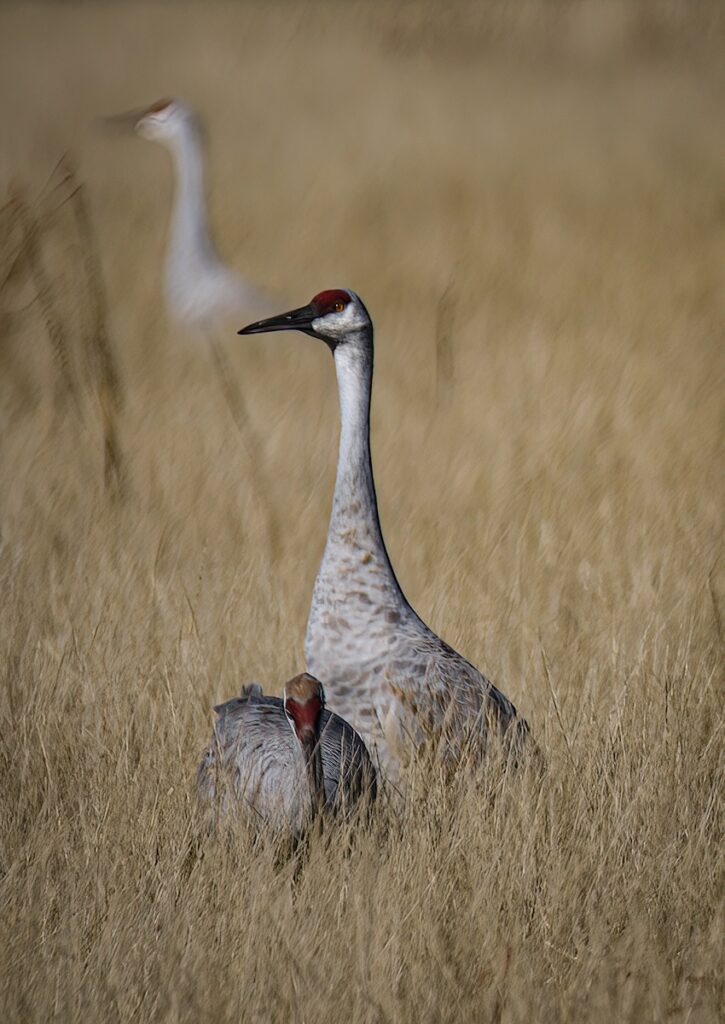
A Vast Wetland Refuge
The Bosque spans 57,331 acres of flat marshland and waterways, irrigated by systems from the Rio Grande to support migrating waterfowl. A 15-mile paved automobile loop winds through the marshes, with observation platforms extending into the wetlands for closer wildlife viewing. Hiking trails and picnic sites add to the visitor experience. The preserve is managed by the U.S. Fish and Wildlife Service. While open year-round, fall and winter bring crowds of birdwatchers beginning in late October, when sandhill cranes, geese, ducks, raptors, and other birds arrive for the season.
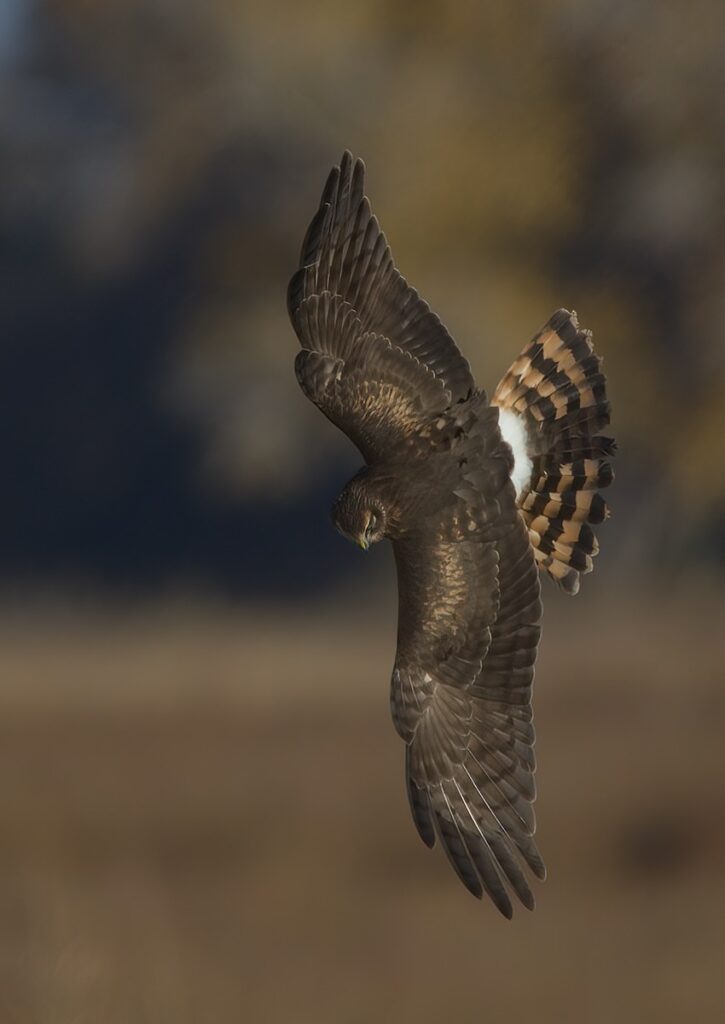
A Migratory Corridor
For millennia, the Rio Grande flooded seasonally, creating fertile land that supported grains and grasses which fed large migrating bird populations. From Cochiti in the north to Truth or Consequences in the south, the middle Rio Grande valley forms part of a critical migratory corridor. New Mexico sits within the Central Flyway, which stretches from Canada and Alaska along the eastern Rockies. Other major flyways include the Pacific, Mississippi, and Atlantic routes. These “bird highways” funnel birds from northern nesting grounds to southern wintering sites. Bosque del Apache is a key stop for sandhill cranes, geese, and ducks, though some birds continue farther south.
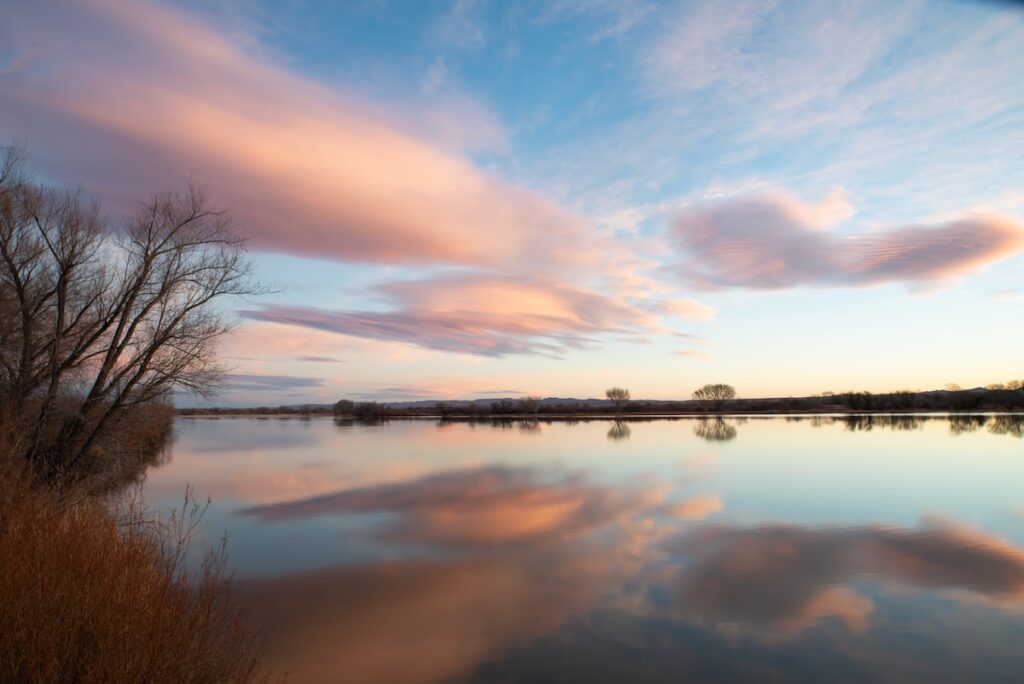
Conservation and History
Settlers in the 17th and 18th centuries, and westward-ho farmers in the 19th century, began controlling the Rio Grande to prevent flooding of farmland, which disrupted the natural cycle that replenished fertile soil. When critical bird habitat was lost, conservationists began preserving ecosystems in the early 20th century. The 1918 Migratory Bird Treaty, still in effect today, provides international oversight for migratory birds and habitat protection. In 1939, the Bosque del Apache Wildlife Reserve was established to preserve native and migrating wildlife. Today, the Bosque is one of 560 U.S. refuges covering 150 million acres and one of eight in New Mexico.
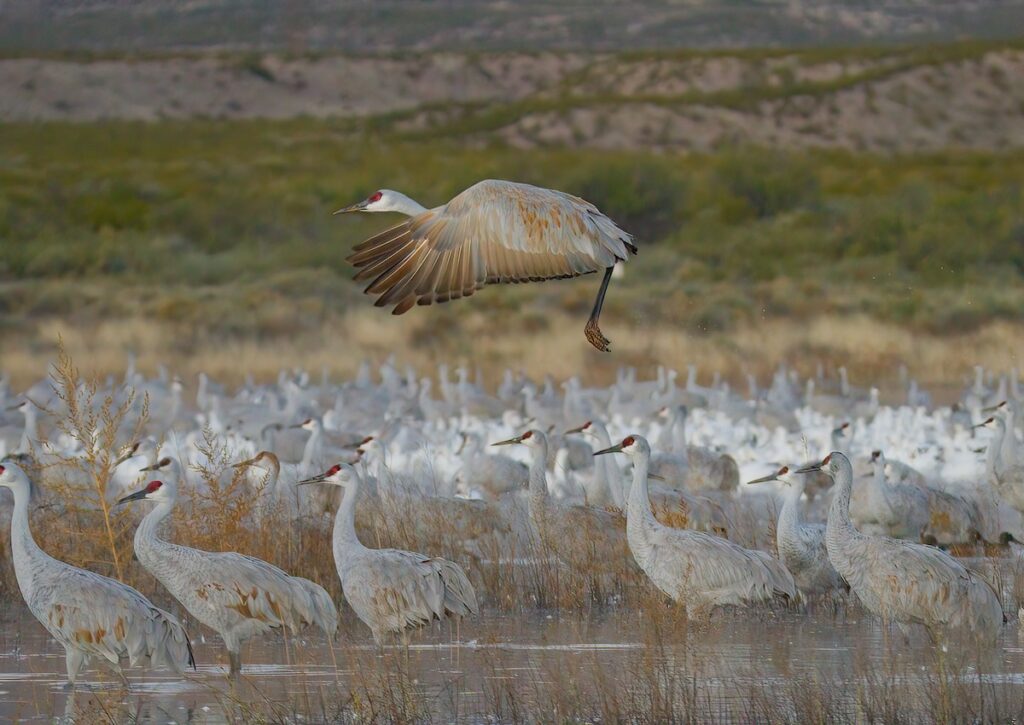
Daily Life of Migratory Birds
In the morning, birds fly out to nearby farms and wetlands to feed. Geese and cranes forage in harvested cornfields and winter wheatfields, often grown in partnership with wildlife preserves. Ducks seek deeper water to dive or dabble. At sunset, all return to the safety of the marsh to roost until the next sunrise.
Winter Stars
Starting in October, sandhill cranes and snow geese are the stars. About 18,000 cranes winter at the Bosque, a small fraction of the 400,000 in the Central Flyway. Another 15,000 spend the season throughout the middle Rio Grande valley. Together with roughly 100,000 ducks, snow geese, and other waterfowl, they share the refuge with an astonishing variety of wildlife. Bald eagles, hawks, owls, and other raptors patrol the marsh edges. Mule deer, coyotes, bobcats, javelinas, and turkeys live year-round. Shorebirds such as sandpipers, ibis, and plovers visit in spring, while vireos, flycatchers, and warblers frequent the area. Hummingbirds and other pollinators flourish in the summer. Observation decks, tour-loop roads, and hiking trails offer safe and close-up viewing, along with excellent photography opportunities.
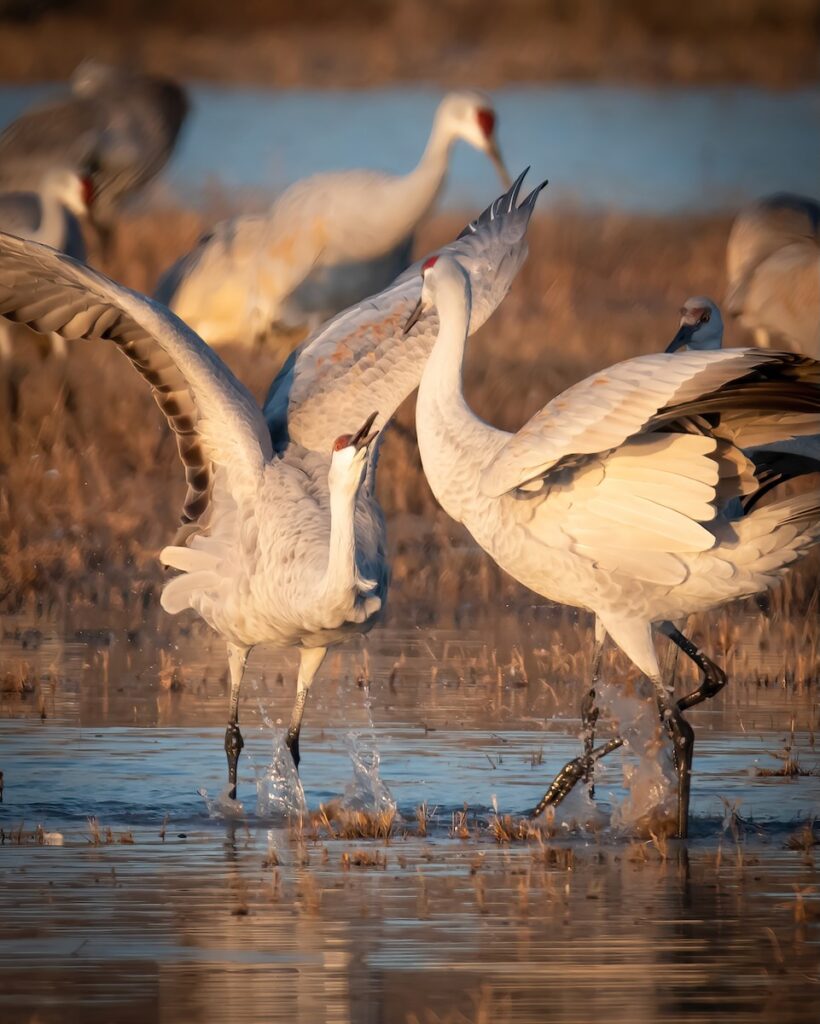
Challenges and Preservation
Urban development, long-term drought, shrinking habitat, and inconsistent government funding threaten the Bosque and other wildlife preserves. These protected areas provide education, recreation, and a chance to participate in a natural cycle that has continued for thousands of years.
Story by Mara Christian Harris
Photography by Douglas Maahs
Subscribe to TABLE Magazine‘s print edition.
